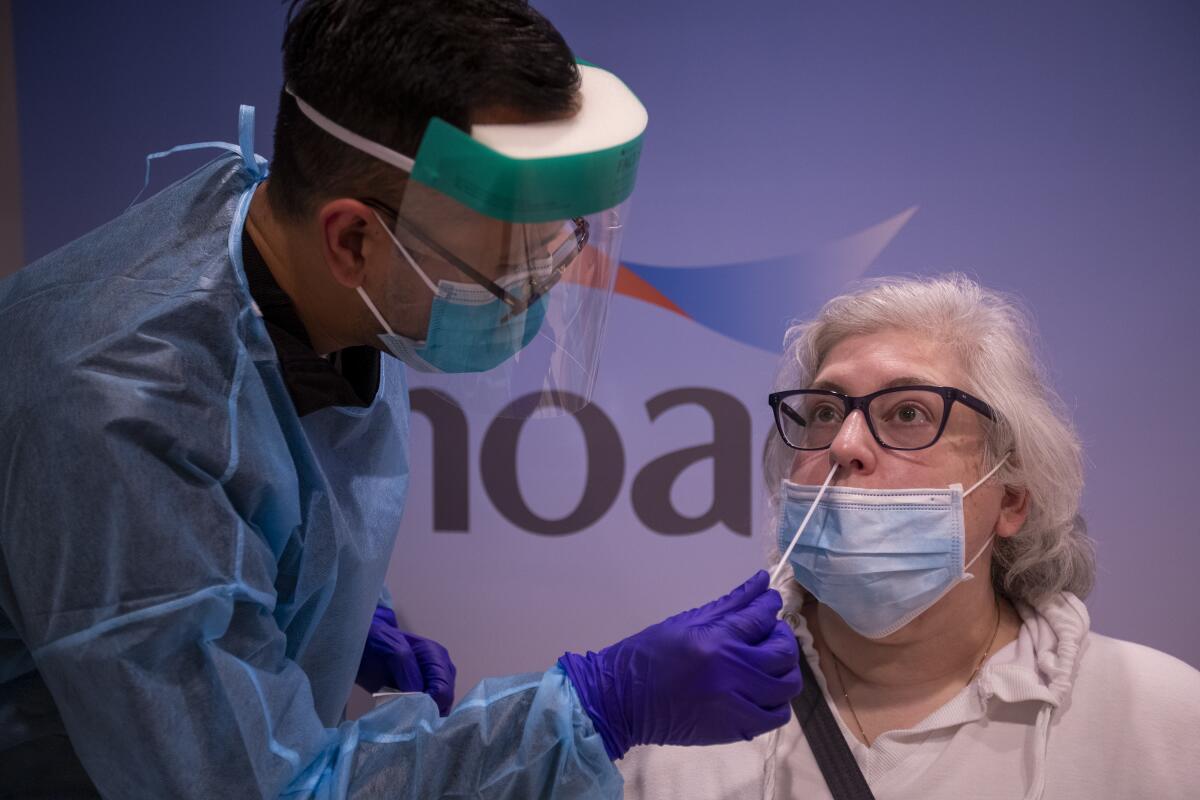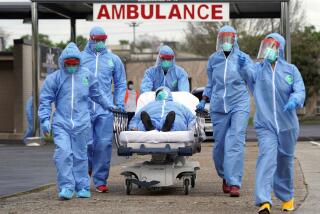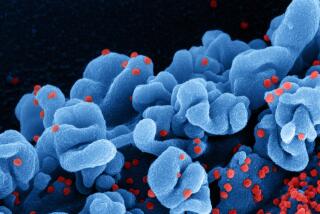Scientists struggle to understand the competition between Omicron and Delta

As the pandemic’s third year dawns, Americans are feeling fatigued and confused. And it’s all Omicron’s fault.
Even scientists are deeply uncertain about how quickly or even whether the new variant will eclipse Delta, as well as who is likely to fall ill with which variant and how sick those people will become.
“It does feel like Omicron has changed everything we thought we knew” about the virus, said Dr. Megan Ranney, associate dean of Brown University’s School of Public Health. “This feels like a strange turning point, potentially, in the pandemic.”
Clues about the pandemic’s next phase have begun to emerge, but they have been conflicting and prone to error. Torrents of new data and statistics tumble out daily, but what they mean isn’t always clear. Some seem quite reassuring, others deeply alarming.
Meanwhile, decisions need to be made: Visit grandma in her nursing home? Attend that New Year’s gathering? Wait hours in line for a COVID test because you woke up with a scratchy throat? Send your kid back to college when she might be sent home in two weeks? Wear a mask ... everywhere?
Here’s what we know about Omicron and the state of the pandemic — and what we don’t.
New infections
The United States has notched a new high in confirmed infections, with an average of 277,241 new cases a day for the last full week of 2021.
The previous record was 259,759, set early last January. A week later, daily COVID-19 deaths reached their zenith of 4,048, and for the next month that figure rarely fell below 2,000.
As worrisome as that history sounds, it is unlikely to repeat itself, because there are stark differences between then and now. Most importantly, the number of Americans who are fully vaccinated has gone from about 350,000 to more than 204 million, with 68 million of those having also received a booster shot.
Hospitalizations
Among people over 65, the vaccinated are six times less likely than the unvaccinated to be hospitalized for COVID-19. The difference is twice that for people 18 to 49.
The benefit of vaccines appears evident in the current surge. While hospitalizations climbed almost 20% in the week that ended Monday, hitting a daily average of 9,442, that figure is 43% below the peak nearly a year ago.
Similarly, with an average of 1,085 deaths a day over the last week, COVID-19 is killing about half as many people as it did during last winter’s surge.
Still, it’s unclear how the surge in cases will play out, because it typically takes two to four weeks for an infection to send a person to the hospital. Those who die of COVID-19 often spend weeks in the hospital before succumbing.
And even after hospitalization and death rates are known, researchers will have to sift through medical records and genetic data to compare the effects of Omicron and Delta, and how vaccination and variant type interacted. That work could take weeks or months.
In the meantime, researchers in places that have been host to the Omicron variant for a bit longer than the United States have offered a possible glimpse of the future here.
An analysis by South African scientists suggests that people thought to be infected with Omicron were about 70% less likely to become severely ill and 80% less likely to be hospitalized than those who were infected with Delta.
A study conducted in England found that after accounting for the effects of vaccination, Omicron-infected people were about 45% less likely than people infected with Delta to wind up in the hospital.
Omicron’s quest for dominance
It’s unclear whether the current trends are being driven more by the Omicron variant or by the Delta variant.
On Dec. 22, a projection released by the U.S. Centers for Disease Control and Prevention suggested that Omicron had rocketed to dominance in the United States, jumping from 3% of all cases to 73% over two weeks in early December.
News reports treated Omicron’s sudden takeover as a fait accompli rather than the projection it was. The reports also seemed to suggest that the new variant was responsible for other shocking developments: New cases had topped those seen in last September’s wave, and intensive care units nationally had reached about three-quarters capacity.
The projection, it turned out, was wrong.
A week later, the CDC would downgrade Omicron’s presence on Dec. 18 to an estimated 22.5% of new U.S. cases, predicting that by Christmas Day that figure would hit 59%. That projection could change too.
Though still much more transmissible than Delta, Omicron does not seem to have carried out the stunning coup that had been announced. What happened?
The CDC oversees the sequencing of about 80,000 specimens a week — about 14% of new cases, at last count — but it takes weeks to compile the results. That’s too slow for public health authorities guiding current policy.
So the agency’s modelers must take three-week-old data and make judgments about how that mix of variants is likely to have changed. That exercise, known as “Nowcasting,” uses a smattering of newer genetic sequencing results supplied by the states to update a variant’s national growth rate. But choosing the wrong sample — an easy mistake in a highly fluid situation — can lead to significant errors.
The big takeaway: the Delta variant is still very much among us.
Emory University epidemiologist Jodie Guest said that in a surge of new cases, Delta is likely to do what it has done since its arrival last March: send many who remain unvaccinated to the hospital, or worse.
“I routinely hear that Omicron is mild, not going to be a big deal, and hopefully that’s true,” Guest said. “But clearly Delta is still here, and everyone took Delta pretty seriously. It makes sense from the hospitalizations we’re seeing that there’s more Delta going on than we had estimated.”
Testing
The Biden administration announced this month that it would make at-home testing readily available. The aim is to make it easier for people to figure out if they’re infected and act to prevent the spread of the virus.
But it is also likely to add another layer of uncertainty to our understanding of the pandemic, because it means that fewer people will receive PCR tests.
Gathered from every corner of the United States and zealously tracked by the CDC, positive PCR tests have been the basis for detecting pandemic hot spots, measuring vaccine protection, figuring out the transmissibility of new variants and alerting authorities to coming waves of hospitalizations and deaths. Researchers also track what happens after a positive PCR test — asymptomatic illness, hospitalization, death, long COVID — to gain insights into individual and group vulnerabilities.
All of that will become less reliable as more Americans use at-home antigen tests, whose results will not be centrally compiled. Some people who get a positive reading on an antigen test may seek to confirm it with a PCR test. But most will probably not, meaning more infections won’t make it into the official case count.
“Testing has already started to shift, and it’s likely already impacted the accuracy of our case counts,” Ranney said.
At the same time, the increasingly DIY nature of diagnosing an infection “is partly the natural evolution of handling this virus,” she said.
If the Omicron variant proves to be milder, and vaccines continue to protect against severe illness, positive antigen tests will largely be followed by mild illness. At that point, the CDC could focus more on counting severe illnesses and deaths.
“We’re going to have to get more sophisticated about how we think about this virus,” Ranney said.







